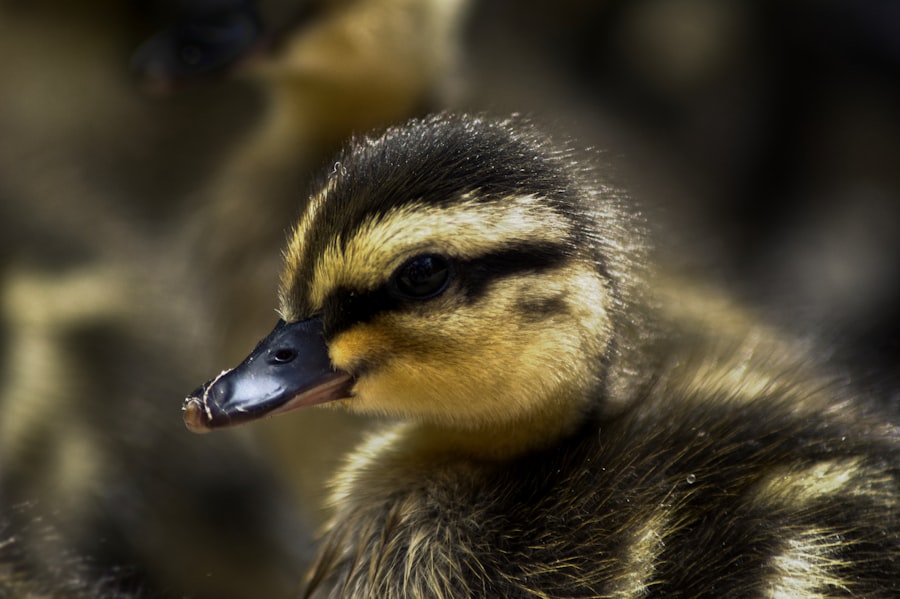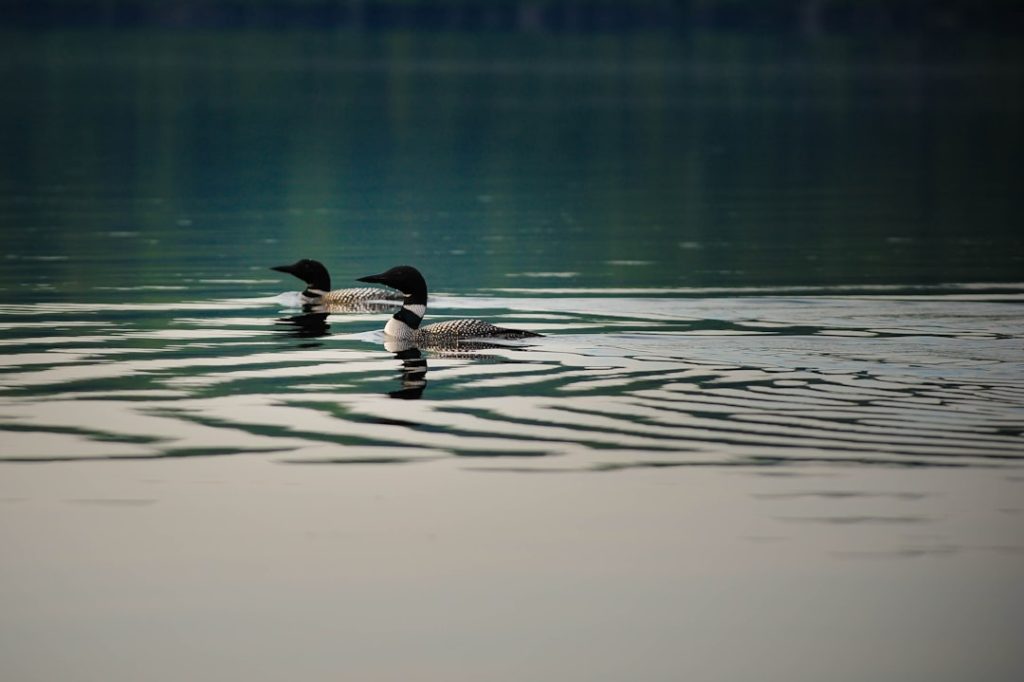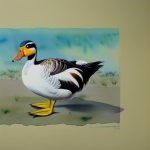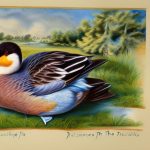Gray duck breeds are a popular choice for many duck enthusiasts due to their unique characteristics and versatility. These breeds are known for their beautiful plumage, calm demeanor, and excellent egg-laying abilities. Gray ducks come in a variety of breeds, each with its own distinct traits and qualities. They are often raised for their eggs, meat, and as pets. In this article, we will explore the characteristics and physical appearance of gray duck breeds, popular breeds, breeding and rearing practices, uses and benefits, as well as care and maintenance tips for these fascinating birds.
Table of Contents
Key Takeaways
- Gray duck breeds are a popular choice for backyard poultry enthusiasts due to their hardiness and adaptability.
- Gray ducks are known for their distinctive physical characteristics, including a gray plumage and a sturdy build.
- Popular breeds of gray ducks include the Swedish Blue, Ancona, and Cayuga, each with their own unique traits and qualities.
- Breeding and rearing gray ducks requires attention to proper nutrition, housing, and breeding practices to ensure healthy offspring.
- Gray ducks are valued for their eggs, meat, and pest control abilities, making them a versatile and beneficial addition to a small farm or homestead.
Characteristics and Physical Appearance of Gray Duck Breeds
Gray duck breeds are known for their medium to large size, with sturdy bodies and strong legs. They have a distinctive gray plumage that can vary in shade from light silver to dark charcoal. Their feathers are often iridescent, giving them a beautiful sheen in the sunlight. Gray ducks have a rounded head with a medium-length bill and expressive dark eyes. Their feet are webbed, allowing them to be excellent swimmers. These ducks are known for their calm and friendly demeanor, making them great additions to backyard flocks or small farms. They are also excellent foragers and can help control pests in the garden or around the property.
In terms of size, gray duck breeds can range from medium to large, with males typically being larger than females. They are hardy birds that can adapt to various climates and environments, making them suitable for both rural and urban settings. Their adaptability and ease of care make them an ideal choice for beginners and experienced duck keepers alike. Overall, gray duck breeds are prized for their beauty, temperament, and practicality, making them a popular choice for many duck enthusiasts.
Popular Breeds of Gray Ducks
There are several popular breeds of gray ducks that are favored by duck keepers around the world. One of the most well-known breeds is the Silver Appleyard, which originated in England and is prized for its large size, excellent egg-laying abilities, and flavorful meat. The Silver Appleyard has a striking silver plumage with white markings on the neck and chest, making it a visually stunning bird. Another popular breed is the Swedish Blue duck, which hails from Sweden and is known for its calm temperament and good egg production. This breed has a unique blue-gray plumage with a white bib on the chest, adding to its appeal.
The Saxony duck is another popular gray breed that originated in Germany. It is prized for its excellent meat quality and good egg-laying abilities. The Saxony duck has a beautiful silver-gray plumage with a white bib on the chest and distinctive blue eyes. Other popular gray duck breeds include the Ancona, Cayuga, and Blue Swedish, each with its own unique characteristics and qualities. These breeds are valued for their beauty, productivity, and adaptability, making them sought after by duck enthusiasts and small-scale farmers alike.
Breeding and Rearing Gray Ducks
Breeding and rearing gray ducks can be a rewarding experience for those interested in raising these beautiful birds. When it comes to breeding, it’s important to select healthy, high-quality breeding stock to ensure the production of strong and vigorous offspring. Breeding ducks should be provided with a suitable nesting area that is quiet, secure, and comfortable. It’s essential to provide proper nutrition and care to breeding ducks to ensure successful reproduction and healthy offspring.
When it comes to rearing ducklings, it’s important to provide a warm and safe environment for the young birds. Ducklings should be kept in a brooder with access to clean water, nutritious feed, and adequate space to move around. It’s important to monitor their growth and development closely to ensure they are thriving. As they grow, they can be transitioned to an outdoor pen or coop where they can continue to grow and mature. Proper care and attention during the breeding and rearing process are essential for the health and well-being of gray ducks.
Uses and Benefits of Gray Ducks
Gray ducks have a variety of uses and benefits that make them valuable additions to small farms and homesteads. One of the primary uses of gray ducks is for egg production. Many gray duck breeds are excellent layers, producing large, flavorful eggs that are prized by home cooks and bakers. Duck eggs are known for their rich flavor and nutritional value, making them a popular choice for those looking to add diversity to their egg collection.
In addition to egg production, gray ducks are also raised for their meat. Duck meat is known for its rich flavor and versatility in cooking. Many small-scale farmers raise gray ducks for meat production, providing a sustainable source of protein for their families or local communities. Gray ducks are also valued for their pest control abilities, as they are natural foragers that can help control insects and weeds in the garden or around the property. Their calm demeanor and friendly nature also make them popular as pets or for exhibition purposes. Overall, gray ducks offer a range of uses and benefits that make them valuable additions to small-scale farming operations.
Care and Maintenance of Gray Duck Breeds

Proper care and maintenance are essential for ensuring the health and well-being of gray duck breeds. Providing a suitable living environment is crucial for keeping ducks healthy and happy. Ducks should have access to clean water for drinking and bathing, as well as nutritious feed that meets their dietary needs. It’s important to provide adequate shelter that protects ducks from predators and the elements while allowing them space to move around freely.
Regular health checks are important for monitoring the overall well-being of gray ducks. This includes checking for signs of illness or injury, as well as providing routine vaccinations and parasite control as needed. Maintaining good hygiene in the duck’s living environment is also essential for preventing disease and promoting good health. This includes regular cleaning of waterers, feeders, and living quarters to prevent the buildup of bacteria or mold.
In addition to physical care, providing mental stimulation is important for keeping ducks happy and engaged. Ducks enjoy access to ponds or shallow pools where they can swim and forage for food. Providing enrichment activities such as hanging treats or toys can also help keep ducks mentally stimulated. Overall, proper care and maintenance are essential for ensuring the health and happiness of gray duck breeds.
Conclusion and Future of Gray Duck Breeds
In conclusion, gray duck breeds are prized for their beauty, productivity, and versatility. These birds offer a range of uses and benefits that make them valuable additions to small farms and homesteads. With proper care and maintenance, gray ducks can thrive in a variety of environments while providing eggs, meat, pest control, or companionship.
The future of gray duck breeds looks promising as more people recognize the value of these birds in sustainable farming practices. As interest in small-scale farming continues to grow, gray ducks are likely to remain popular choices for those looking to raise poultry for eggs, meat, or as pets. With their unique characteristics and practical uses, gray duck breeds are sure to remain a beloved choice for duck enthusiasts around the world.
If you’re interested in learning more about raising ducks, you might want to check out this article on choosing the right flooring for a chicken coop. While it’s not specifically about ducks, the principles of coop design and maintenance can be applied to a variety of poultry, including ducks. Plus, it’s always helpful to learn from the experiences of other poultry keepers.
FAQs
What are some common breeds of gray ducks?
Some common breeds of gray ducks include the Swedish Blue duck, the Cayuga duck, and the Ancona duck.
What are the characteristics of gray duck breeds?
Gray duck breeds typically have plumage that is predominantly gray in color, with variations in shades and patterns. They are medium to large in size, with a sturdy build and a slightly elongated body.
What are the uses of gray duck breeds?
Gray duck breeds are often raised for their meat, eggs, and sometimes for ornamental purposes. They are known for their calm temperament and adaptability to various climates.
What are the care requirements for gray duck breeds?
Gray duck breeds require access to water for swimming and bathing, a balanced diet of commercial duck feed and fresh greens, and protection from predators. They also need shelter from the elements and regular veterinary care.
Are gray duck breeds good for beginners in duck farming?
Yes, gray duck breeds are generally considered to be good for beginners in duck farming due to their calm nature and adaptability. However, proper research and preparation are still necessary before starting a duck farming venture.
Meet Walter, the feathered-friend fanatic of Florida! Nestled in the sunshine state, Walter struts through life with his feathered companions, clucking his way to happiness. With a coop that’s fancier than a five-star hotel, he’s the Don Juan of the chicken world. When he’s not teaching his hens to do the cha-cha, you’ll find him in a heated debate with his prized rooster, Sir Clucks-a-Lot. Walter’s poultry passion is no yolk; he’s the sunny-side-up guy you never knew you needed in your flock of friends!







